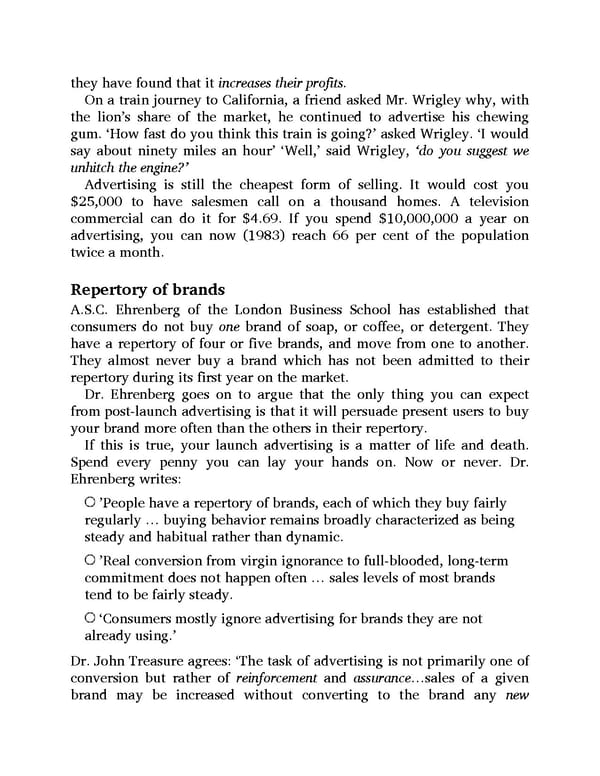they have found that it increases their profits. On a train journey to California, a friend asked Mr. Wrigley why, with the lion’s share of the market, he continued to advertise his chewing gum. ‘How fast do you think this train is going?’ asked Wrigley. ‘I would say about ninety miles an hour’ ‘Well,’ said Wrigley, ‘do you suggest we unhitch the engine?’ Advertising is still the cheapest form of selling. It would cost you $25,000 to have salesmen call on a thousand homes. A television commercial can do it for $4.69. If you spend $10,000,000 a year on advertising, you can now (1983) reach 66 per cent of the population twice a month. Repertory of brands A.S.C. Ehrenberg of the London Business School has established that consumers do not buy one brand of soap, or coffee, or detergent. They have a repertory of four or five brands, and move from one to another. They almost never buy a brand which has not been admitted to their repertory during its first year on the market. Dr. Ehrenberg goes on to argue that the only thing you can expect from post-launch advertising is that it will persuade present users to buy your brand more often than the others in their repertory. If this is true, your launch advertising is a matter of life and death. Spend every penny you can lay your hands on. Now or never. Dr. Ehrenberg writes: ’People have a repertory of brands, each of which they buy fairly regularly … buying behavior remains broadly characterized as being steady and habitual rather than dynamic. ’Real conversion from virgin ignorance to full-blooded, long-term commitment does not happen often … sales levels of most brands tend to be fairly steady. ‘Consumers mostly ignore advertising for brands they are not already using.’ Dr. John Treasure agrees: ‘The task of advertising is not primarily one of conversion but rather of reinforcement and assurance…sales of a given brand may be increased without converting to the brand any new
 Ogilvy on Advertising Page 245 Page 247
Ogilvy on Advertising Page 245 Page 247